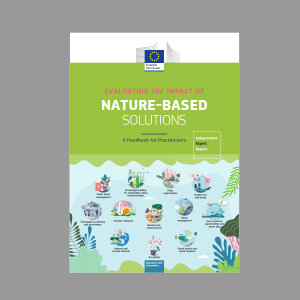
There is a multitude of innovative nature-based solutions (NbS) projects and initiatives, garnering great benefits to their surroundings in Europe. Under the NetworkNature coordinated European Commission NbS Task Force 2: Nature-based Solutions Impact Evaluation Framework, experts from these projects have gathered to create a handbook that outlines a robust NbS impact assessment framework. To enhace wider application of the framework, the indicators have been developed collaboratively with the European Environment Agency and the EU Joint Research Centre.
The NbS Impact Assessment Framework enables cities and regions assess NbS, and help them choose suitable ones for their context and anticipate challenges and opportunities associated with specific NbS, enabling the sustainability of the solutions in the long-term. The handbook allows policy makers to gain an understanding of specific NbS ability to reach desired outcomes. Readers will learn how to create scientifically sound monitoring and evaluation plans for NbS. The evidence the book draws from are pioneering Horizon 2020 projects implementing NbS, and draws from their key insights and case-studies. A selection of these case-studies are presented in the handbook for readers to gain an insight on how impact and monitoring has been conducted in diverse environments. The handbook includes indicators and methodologies to help assess impacts of nature-based solutions across 12 societal challenge areas: Climate Resilience; Water Management; Natural and Climate Hazards; Green Space Management; Biodiversity; Air Quality; Place Regeneration; Knowledge and Social Capacity Building for Sustainable Urban Transformation; Participatory Planning and Governance; Social Justice and Social Cohesion; Health and Well-being; New Economic Opportunities and Green Jobs. To ensure resilience of the framework the handbook delves in to the use of NbS in ecosystem-based disaster risk reduction schemes, outlining the components of risk and potential impacts of NbS on risks due to natural phenomena. Finally the handbook details data types, sources and techniques to use when monitoring and assessing the impacts of NbS.
The report will act as a reference for EU policies and activities and help orient urban practitioners in developing evaluation frameworks for NbS at different scales and contribute to developing a European evidence base of NbS impacts. Find more information and the handbook here.
